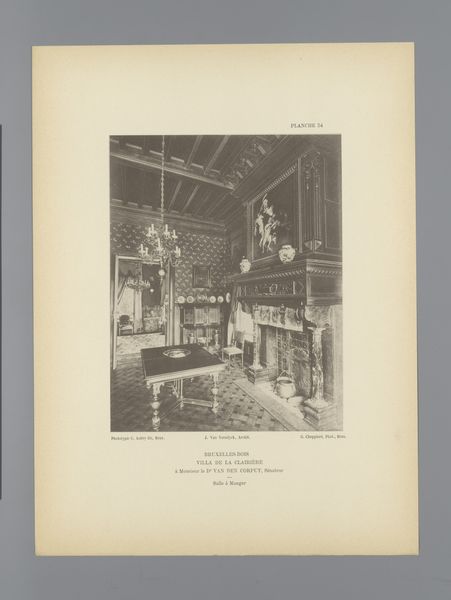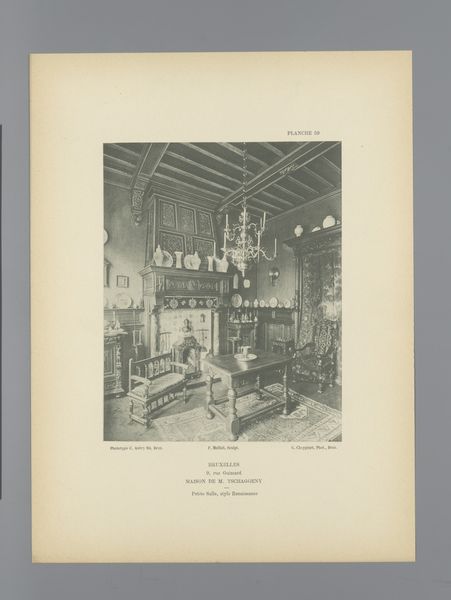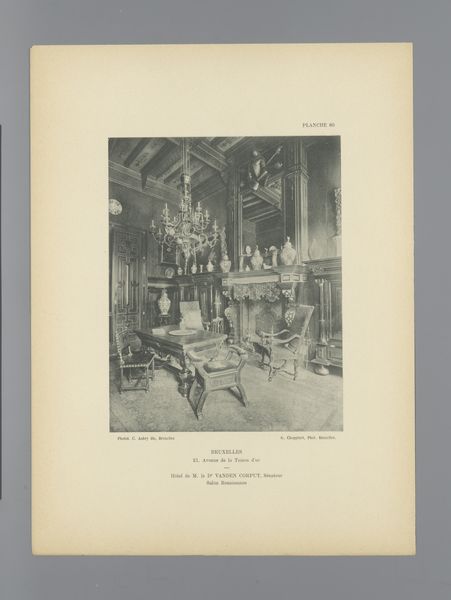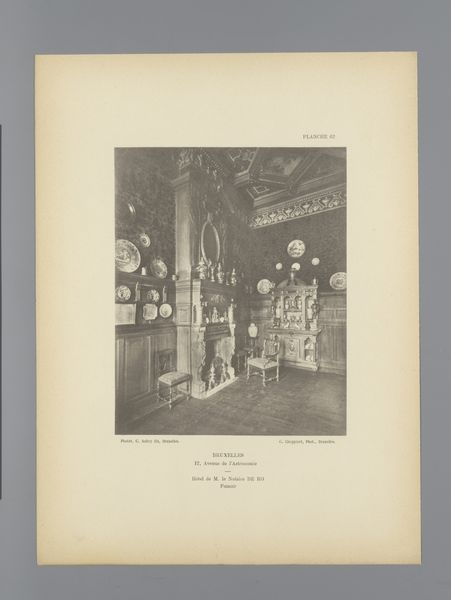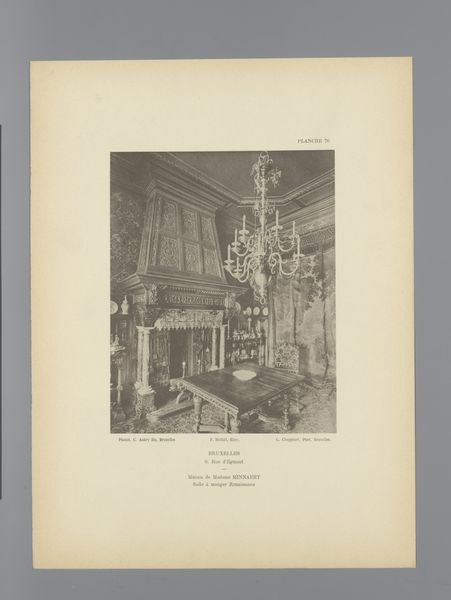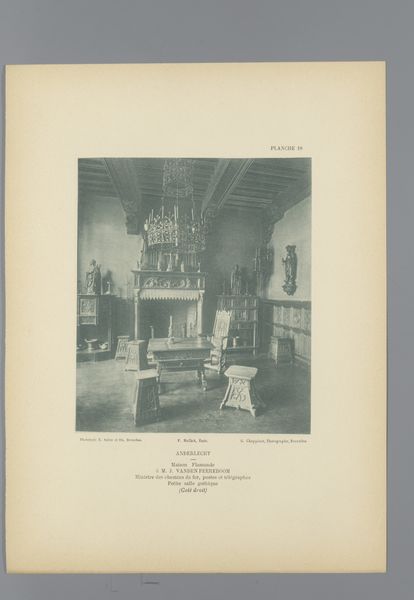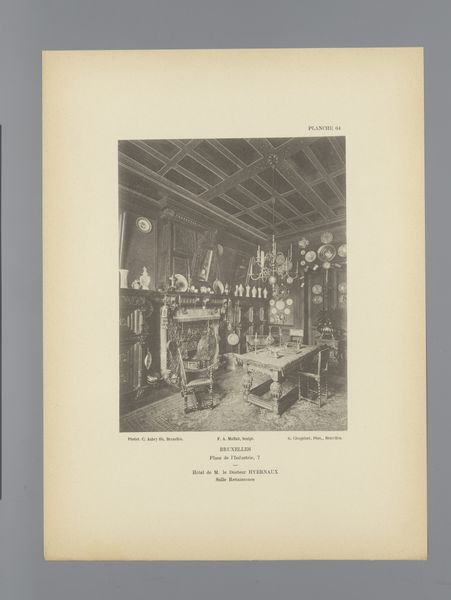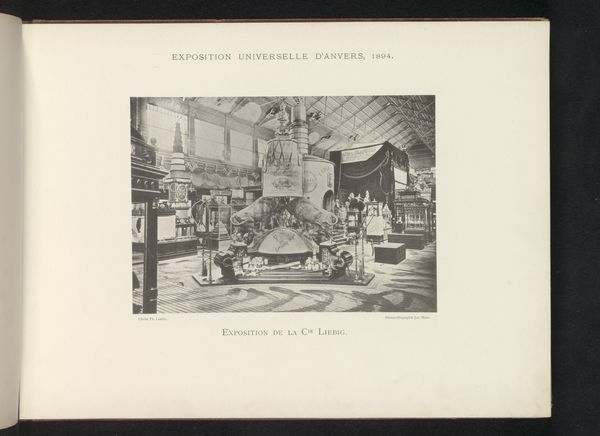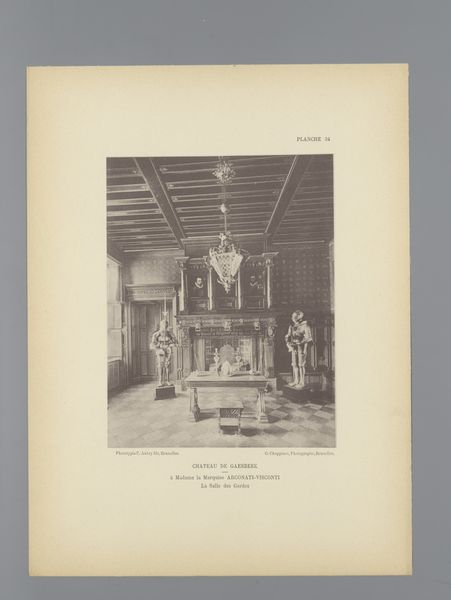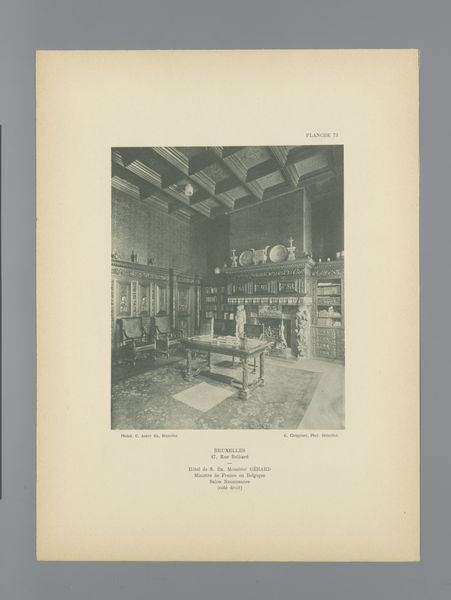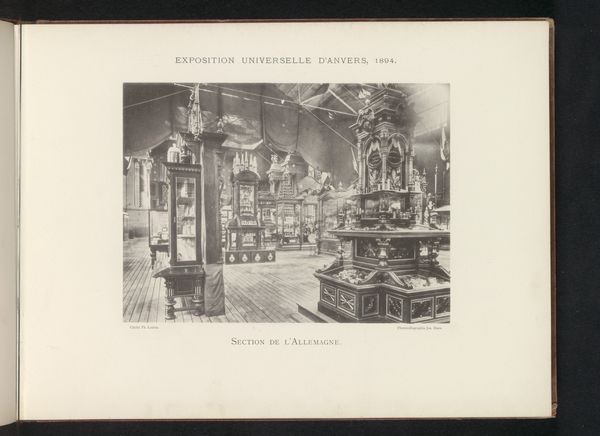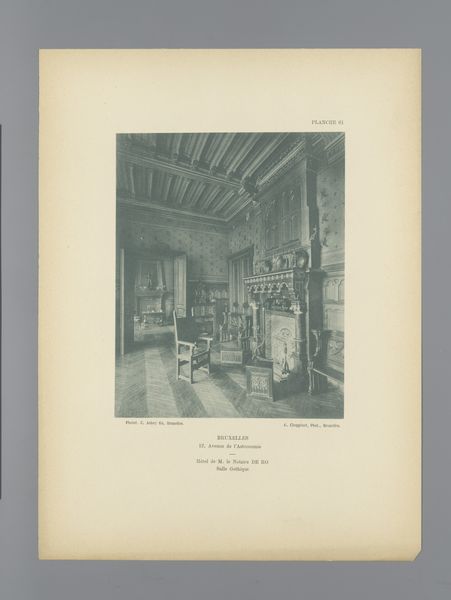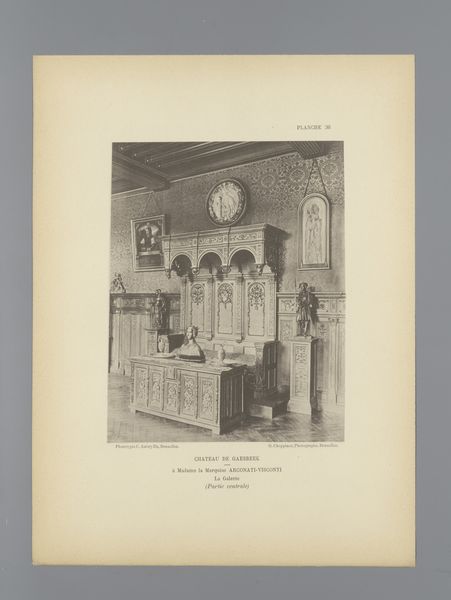
Belgische afdeling tijdens de Wereldtentoonstelling van 1894 te Antwerpen c. 1894
0:00
0:00
print, photography
#
art-nouveau
# print
#
landscape
#
photography
#
realism
Dimensions: height 153 mm, width 218 mm
Copyright: Rijks Museum: Open Domain
Curator: This print by Charles Bernhoeft, dating to around 1894, captures the Belgian section of the World's Fair in Antwerp. What are your initial thoughts? Editor: The symmetry is immediately striking. The photograph emphasizes the elaborate displays, constructing a layered visual field. The monochrome palette flattens the architectural space, making the image about textures and repeating patterns rather than depth. Curator: Indeed. Looking at this image through a lens of the Belle Époque and Belgian colonialism, how might we interpret the display of national goods at a world exhibition? Who was invited to this commercial exchange, and what are some ways this event sought to portray Belgium as a dominant power? Editor: By employing Art Nouveau stylings in the architecture, Belgium situates itself within the fin-de-siècle cultural aesthetic of the era. Bernhoeft frames the photograph to showcase both a sense of orderly abundance and a specific kind of industrial beauty. Notice how the upper registers present what appear to be carefully displayed clocks? Curator: Right. The presentation becomes a signifier of power, progress, and order. It’s no accident, is it? Belgium’s pursuit of its own colonial empire during this period hinged on similar visual tactics to distinguish colonizer from colonized, framing indigenous peoples as childlike, underdeveloped, chaotic—as "other". This photograph implicitly aligns Belgium with modernity, sophistication, and the perceived pinnacle of Western civilization. Editor: I can see that. Shifting back to the aesthetic for a moment, I am fascinated by the tonal gradations within the grey scale that define shape and depth without heavy contrast, constructing both realistic depiction and suggestive fantasy all at once. Curator: For me, what stands out is that a simple document becomes something charged, reflecting on issues of national identity, global trade, and the uneven distribution of power. Editor: A convergence of history, politics and, as always, visual construction. Curator: An appropriate reminder. Thank you.
Comments
No comments
Be the first to comment and join the conversation on the ultimate creative platform.
